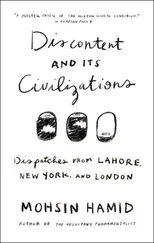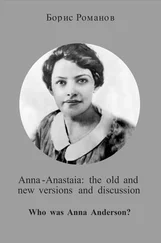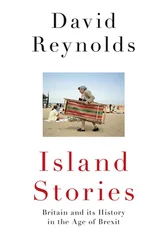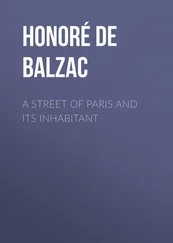Henry Edwards - Old and New Paris - Its History, Its People, and Its Places, v. 1
Здесь есть возможность читать онлайн «Henry Edwards - Old and New Paris - Its History, Its People, and Its Places, v. 1» — ознакомительный отрывок электронной книги совершенно бесплатно, а после прочтения отрывка купить полную версию. В некоторых случаях можно слушать аудио, скачать через торрент в формате fb2 и присутствует краткое содержание. Жанр: foreign_antique, foreign_prose, Путешествия и география, на английском языке. Описание произведения, (предисловие) а так же отзывы посетителей доступны на портале библиотеки ЛибКат.
- Название:Old and New Paris: Its History, Its People, and Its Places, v. 1
- Автор:
- Жанр:
- Год:неизвестен
- ISBN:нет данных
- Рейтинг книги:4 / 5. Голосов: 1
-
Избранное:Добавить в избранное
- Отзывы:
-
Ваша оценка:
- 80
- 1
- 2
- 3
- 4
- 5
Old and New Paris: Its History, Its People, and Its Places, v. 1: краткое содержание, описание и аннотация
Предлагаем к чтению аннотацию, описание, краткое содержание или предисловие (зависит от того, что написал сам автор книги «Old and New Paris: Its History, Its People, and Its Places, v. 1»). Если вы не нашли необходимую информацию о книге — напишите в комментариях, мы постараемся отыскать её.
Old and New Paris: Its History, Its People, and Its Places, v. 1 — читать онлайн ознакомительный отрывок
Ниже представлен текст книги, разбитый по страницам. Система сохранения места последней прочитанной страницы, позволяет с удобством читать онлайн бесплатно книгу «Old and New Paris: Its History, Its People, and Its Places, v. 1», без необходимости каждый раз заново искать на чём Вы остановились. Поставьте закладку, и сможете в любой момент перейти на страницу, на которой закончили чтение.
Интервал:
Закладка:
At last, however, a powerful fleet, led by a chief whom the French call “Siegfroi,” but whose real name was doubtless “Siegfried,” sustained a crushing defeat; and, simultaneously with the Norman invaders, the Carlovingian Dynasty passed away.
With the advent of the Capet Dynasty a continuous history began for Paris – in due time to become the capital of all France. Ancient Paris was three times burnt to the ground: the Paris which dates from the ninth century has often been conquered, but never burnt.
Ancient Paris, the Lutetia of the Romans, was an island enclosed between two branches of the Seine. But the river overflowed north and south, and it became necessary to construct large ditches or moats, which at once widened the boundaries of the “city.” Gradually the population spread out in every direction; and when, under Louis XIV., the line of boulevards was traced, the extreme limits of the capital were marked by this new enclosure. Then under Louis XVI., the Farmers-General, levying dues (the so-called octroi ) on imports into the town, established for their own convenience certain “barriers,” at which persons bringing in food or drink were stopped until they had acquitted themselves of the appointed tax; and, connecting these “barriers,” they thus formed the line of outer boulevards.
Paris extended in time even to these outer boulevards. Then, under Louis-Philippe, at the instigation of his Minister, M. Thiers, a line of fortifications was constructed around Paris; which, proving insufficient in 1870 and 1871 to save the capital from bombardment, has in its turn been surrounded by a circle of outlying detached forts intercommunicating with one another.
The fortifications of Paris have had a strange history. At the time of their being planned, opinions in France were divided as to whether they were intended to oppose a foreign invasion or to control an internal revolt. In all probability they were meant, according to the occasion, to serve either purpose. They were not only designed by M. Thiers, but executed under his orders; and this statesman, who had made a careful study of military science, lived to see them powerless against the German army of investment, and successful against the Paris Commune.
Paris had been invaded and occupied in 1814, and again in 1815. On the other hand, domestic government had been upset in 1830 by a popular insurrection, which, with adequate military force to oppose it, might at once have been suppressed. Was it as patriot, people asked, or as minister of a would-be despotic king, that M. Thiers proposed to raise around Paris a new and formidable wall?
M. Thiers’s circular line of outworks played no part in connection with the successful insurrection of February, 1848, nor with the unsuccessful one of June in the same year. Nor was a single shot fired from the fortifications in connection with the coup d’État of 1851. They did not in 1871 prevent the French capital from falling into the hands of the Germans: but they delayed for a considerable time the fatal moment of surrender; and if the army of Metz could have held out a few weeks longer – if, above all, the inhabitants of the inactive south, who practically took no part in the war, had been prepared, to fight with something like the energy displayed by the Confederates against the Federals during the American Civil War – then the fortifications would have justified the views of those who had chiefly regarded them as a valuable defence against foreign invasion.
CHAPTER III
THE LEFT BANK AND THE RIGHT
Paris and London – The Rive Gauche – The Quartier Latin – The Pantheon – The Luxemburg – The School of Medicine – The School of Fine Arts – The Bohemia of Paris – The Rive Droite – Paris Proper – “The West End.”
AN effective contrast might be drawn between London and Paris. But, unlike as they are in so many features, physical, moral, and historical, they differ most widely, perhaps, by the relative parts they have played in the history of their respective countries.
The history of Paris is the history of France itself. The decisive battles which brought the great civil and religious wars of the country to an end were fought outside or in the very streets of Paris. It was in Paris that the massacre of St. Bartholomew – darkest blot on the French annals – was perpetrated. The Revolution of 1789, again, was prepared and accomplished in the French capital; and, thenceforth, all those revolutions and coups d’état by which the government of the country was periodically to be changed had Paris for their scene. In England, on the other hand, London had little or nothing to do with the battles of the great Rebellion, the Revolution, or the two insurrections by which the Revolution was followed.
But the English visitor to Paris is in the first place struck by external points of dissimilarity. As regards the difference in the structural physiognomy of the two great capitals (less pronounced now than at one time, though Paris is still loftily, and London for the most part dwarfishly, built), it was ingeniously remarked, some fifty years ago, that the architecture of one city seemed vertical, of the other horizontal.
To pass from the houses to their inhabitants, the population of Paris is as remarkable for variety as that of London for uniformity of costume. For in Paris almost every class has its own distinctive dress. In England, and especially in London, the employer and his workmen, the millionaire and the crossing-sweeper, wear coats of the same pattern. In London, again, every work-girl, every market-woman, wears a bonnet imitated more or less perfectly from those worn by ladies of fashion.
When Gavarni first visited London, he was astonished and amused to see an old woman in a bonnet carrying a flower-pot on her head, and made this grotesque figure the subject of a humorous design, with the following inscription beneath it: “ On porte cette année beaucoup de fleurs sur les chapeaux. ”
Shop-girls and work-girls in Paris wear neat white caps instead of ill-made, or, it may be, dilapidated bonnets; though the more aspiring among them reserve the right of appearing in a bonnet on Sundays and holidays. The French workman wears a blouse and a cap, and looks upon the hat as a sign, if not of superiority, at least of pretension.
“Car moi j’ai payé ma casquette,
Et toi, tu n’as pas payé ton chapeau!”
was the burden of a song very popular with the working classes during the revolutionary days of 1848 to 1851.
Owing to the varieties of dress already touched upon, a crowd in Paris presents a less gloomy, less monotonous appearance than the black-coated mobs of London; and in harmony with the greater relief afforded by the different colours of the costumes are the animated gestures of the persons composing the crowd. Observe, indeed, a mere group of persons conversing on no matter what commonplace subject, or idly chatting as they sip their coffee together on the boulevards, and they appear to be engaged in some violent dispute.
To mention yet another point on which Paris differs from London: the most interesting part of Paris lies on the right bank of the Seine, whereas all that is interesting in London lies on the left bank of the Thames.
The left bank of the Seine possesses, however, buildings and streets of historical interest. Here, too, is the quarter of the schools: the Quartier Latin, as it is still called, not by reason of its Roman antiquities, which, except at the Hotel Cluny, would be sought for in vain, but because, in the mediæval period whence the schools for the most part date, even to comparatively modern times, Latin was the language of the student. On the “left bank,” moreover, stand the Institute, the Pantheon or Church of Ste. Geneviève, as, according to the predominance of religion or irreligion, it is alternately called; the Ste. Geneviève Library, the Luxemburg Palace, with its magnificent picture gallery, the School of Medicine, and the School of Fine Arts. Many of the great painters, too, have their studios – often little academies in themselves – on the left bank of the river; while among the famous streets on the “left bank” is that Rue du Bac so often referred to in the chronicles and memoirs of the eighteenth century. The famous Café Procope, again, literary headquarters of the encyclopædists, stands on what is now considered the wrong side of the water. So too does the Odéon Theatre, once the Théàtre Français, where, in modern as well as ancient times, so many dramatic masterpieces have been produced.
Читать дальшеИнтервал:
Закладка:
Похожие книги на «Old and New Paris: Its History, Its People, and Its Places, v. 1»
Представляем Вашему вниманию похожие книги на «Old and New Paris: Its History, Its People, and Its Places, v. 1» списком для выбора. Мы отобрали схожую по названию и смыслу литературу в надежде предоставить читателям больше вариантов отыскать новые, интересные, ещё непрочитанные произведения.
Обсуждение, отзывы о книге «Old and New Paris: Its History, Its People, and Its Places, v. 1» и просто собственные мнения читателей. Оставьте ваши комментарии, напишите, что Вы думаете о произведении, его смысле или главных героях. Укажите что конкретно понравилось, а что нет, и почему Вы так считаете.












